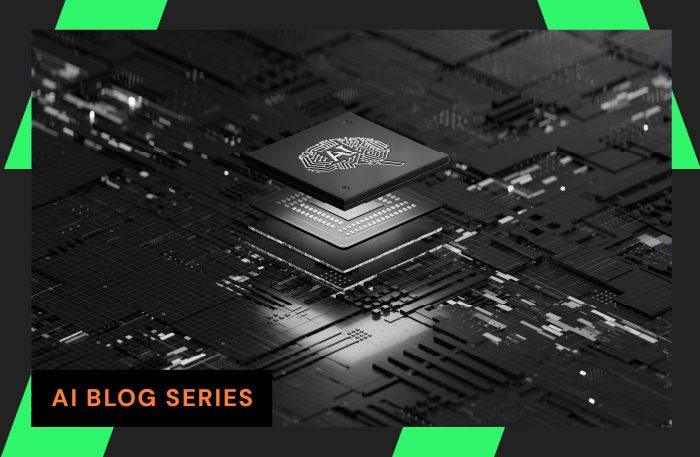
When NetOps professionals can’t effectively monitor cloud operations, their networks develop serious blind spots. Learn how better cloud monitoring and cloud visibility reduces security risks, lowers mean time to resolution (MTTR), increases business value, and stops overspending on network infrastructure.

Want to use this infographic on your own site? Use the embed code below:
The Importance of Cloud Monitoring & Why It’s So Hard
94% of enterprises use the cloud in some capacity
The Cloud Is Here To Stay
- Businesses rely on cloud tools more than ever
- 48% store their most sensitive data on the cloud
- 50% of business workloads run in the cloud
- 92% of businesses use more than one cloud system
- There is over 1 exabyte of data*
- 1024 Petabytes of data
- 1,073,741,824 Gigabytes of data
- quintillion bytes of data
- over 67 million iPhones worth of data
- 50,000 trees made into paper and printed
- Market leaders capture the majority of market share
- Amazon Web Services: 34%
- Microsoft Azure: 22%
- Google Cloud: 9.5%
Despite this growth, 79% of organizations report widening visibility gaps in their cloud infrastructure and a lack of visibility across cloud operations
Clouds Provide Limited Visibility For Enterprises
- Modern cloud tools don’t deliver an end-to-end picture
- Piecemeal apps stand in place of centralized tools
- Most cloud monitoring tools focus on one specific service
- Data teams are forced to gather, prep, and analyze across silos
- Limited visibility with what’s happening on cloud-based platforms
- Generally limited to as-necessary retrieval in a very small window
- Few cloud platforms provide packet-based monitoring tools
- 86% of IT professionals believe packet-level visibility is important for network and application performance
- Basic tools aren’t able to handle the evolving complexities of modern cloud architectures
- More than 9 in 10 large organizations already use multiple cloud providers, forcing them to use separate monitoring tools for each cloud
- It can be difficult to get a holistic picture across an entire network — on-premises to cloud
- This makes it harder to track internal users, remote users, VPN users, cloud applications, and more
- Plus, native cloud tools are usually focused on developers and cloud engineers
- There is very little useful information for network engineers to understand connection or performance problems or use the tools effectively
- Cloud monitoring tools are often focused on security rather than the big picture
- You’ll need to purchase more than one tool to see everything, adding to tool sprawl and operating expenses
Nearly half of all companies have seen performance issues from poor cloud visibility
Limited Visibility Leads To Limited Functionality
- Greater security risks
- Organizations report 3.3 times more incidents caused by lack of visibility
- Lack of support for remote workers
- WFH increases cyberattack frequency by 238%
- Poor migration support
- 74% of companies fail to migrate correctly and eventually move some functions back to on-premises solutions
- Tech stack inflation
- The average IT team already uses 10 to 30 monitoring tools for applications, network infrastructures, and cloud environments
- Limited cost or consumption visibility
- 86% of cloud decision-makers can’t get global views of their costs when needed
- This culminates into a number of serious blindspots
- From reduced visibility, companies report:
- Delays in troubleshooting application performance: 48%
- Delays in troubleshooting network performance: 40%
- Application slowdowns and outages: 38%
- The inability to monitor performance workflows: 31%
- Network performance issues and outages: 31%
- Inability to test performance before deployment: 27%
- Delays in solving security issues: 26%
- An inability to maintain data privacy: 18%
- An inability to defend against a security attacks: 17%
- From reduced visibility, companies report:
More than 80% of organizations are looking to increase their investments in cloud monitoring and cloud visibility
Implementing Visibility With Cloud Monitoring
- Advanced monitoring solutions provide end-to-end visibility across your entire connected network — on-premises, hybrid, and multi-cloud
- Reduce security risks
- Eliminating visibility gaps results in 50% fewer end-user device security incidents
- Lower mean time to resolution (MTTR)
- 40% of IT professionals say low visibility delays their network troubleshooting — the right monitoring solution reduces MTTR
- Increase business value
- 99% of decision-makers see a direct link between cloud visibility and business value
- Stop overspending
- 30% of cloud infrastructure costs are wasted — good monitoring helps expose utilization and costs
- Reduce security risks
9 in 10 organizations report that automating asset visibility could improve security operations — although this only scratches the surface of what LiveAction can do.
LiveAction Extends Visibility Into The Cloud
- LiveAction provides NetOps with a familiar interface
- Empowers NetOps to monitor and troubleshoot cloud performance issues
- Eliminates the need to learn new tools for cloud visibility and troubleshooting
- Interactive web GUI with workflows to alerts, reports, path analysis, packets, and more
- Captures flow and packet data for cloud operations
- Get cloud application data where none existed
- Enrich cloud flow data to better understand traffic flows
- Intelligent packet capture (PCAP) delivers application performance metrics and packet-level forensics
- Provides everything needed to keep tabs on your cloud operations
- Monitoring public cloud traffic – AWS, Azure, Google Cloud, more
- Reporting application performance
- Troubleshooting issues
- Watching for security breaches
- Understanding costs and consumption rates
- Targeted alerting
- Proactive alerting on network and application latency and jitter
- Definitively answer the question, “Is it the application or the network?”
Treat your cloud operations as an extension of your network with LiveAction.
Sources
- https://info.flexera.com/SLO-CM-REPORT-State-of-the-Cloud-2020
- https://about.keysight.com/en/newsroom/pr/2019/25mar-nr19044-ixia-c-r-state-cloud-monitoring.pdf
- https://resources.flexera.com/web/pdf/report-cm-state-of-the-cloud-2021.pdf?elqTrackId=28d62429a6ec40d0bb8e92159e68d63a&elqaid=6545&elqat=2
- https://www.pandasecurity.com/en/mediacenter/security/cloud-security-encryption/
- https://www.virtana.com/press-release/virtana-survey-85-of-organizations-feel-confident-managing-cloud-bills-yet-82-have-incurred-unnecessary-cloud-costs/
- https://swzd.com/resources/state-of-it/
- https://www.fortinet.com/content/dam/fortinet/assets/analyst-reports/ar-2019-ihsm-fortinet-wp-q2.pdf
- https://www.bitsight.com/blog/network-security-monitoring-tools
- https://www.globenewswire.com/en/news-release/2022/03/15/2403837/0/en/Working-From-Home-Increases-Cyberattack-Frequency-by-238-New-Study-by-Alliance-Virtual-Offices-Finds.html
- https://www.helpnetsecurity.com/2021/04/30/it-assets-visibility/
- https://dgtlinfra.com/top-10-cloud-service-providers-2022/
- https://cybersecurityventures.com/the-world-will-store-200-zettabytes-of-data-by-2025/
- https://www.cloudwards.net/cloud-computing-statistics/
- https://us.sganalytics.com/blog/94-of-enterprises-already-use-some-type-of-cloud-service-importance-of-cloud-governance/
- https://www.businesswire.com/news/home/20210427005281/en/Study-Shows-79-of-Organizations-Acknowledge-an-Asset-Visibility-Gap-Leading-to-3X-More-Incidents


